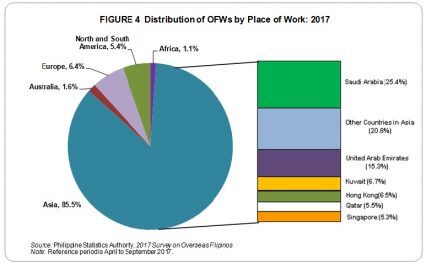By Martin D. Weiss, Ph.D – Weiss Research –
Monday, May 21, 2012 –
We now face the growing danger of a new financial megashock that could strike at almost any time.
It has the potential to be larger than the Lehman Brothers shock of 2008.
It could precipitate a market paralysis much as it did back then, freezing trading in critical debt instruments such as bank CDs, commercial paper and even the government securities of major nations.
Potential for bank failures
It raises the risk of failures that could be more dangerous than those of Fannie Mae, Washington Mutual, AIG, Merrill Lynch, Bank of America or Citigroup.
And it could prompt governments on both sides of the Atlantic to launch countermeasures that are even more radical — and riskier — than anything we’ve seen so far.
Typically, a financial megashock of this magnitude would come as a great surprise to nearly everyone. What’s most unusual about this round of the crisis, however, is that it’s not conforming to any typical pattern:
The next big megashock is both quite predictable and virtually unstoppable!
Like a giant asteroid speeding on a direct path toward Earth, most financial experts and political leaders can see it coming.
But seeing it is one thing. Preventing it is another.
You know what I’m talking about. So does almost anyone watching the news.
It’s the crisis now erupting in Europe.
But I repeat: That knowledge alone does nothing to reduce the potential impact of this impending megashock.
Why? Because even though major bankers and policy makers see it coming, it has not prompted them to change their ways. Nor has it motivated the majority of investors to run for cover — yet.
Instead, they’ve done precisely the opposite, doubling down on their risky investments or maneuvers.
The end result is an explosive combination of extreme danger AND extreme complacency at the same time.
Moreover, the dangers we face today are actually GREATER than those of 2008 in SIX key ways:
ONE. Before the Lehman collapse in 2008, it was strictly individual financial institutions that were on the edge of collapse.
Today, entire nations are on the brink — starting in the cradle of democracy (Greece) … spreading to a great former superpower (Spain) … engulfing the world’s largest economy (the EU) … and striking the world’s largest financial capital (New York).
TWO. In 2007, the last full fiscal year before the Lehman collapse of 2008, the U.S. federal deficit was $161 billion. That was already excessive by most historic comparisons. But it was small enough to allow room for more deficit spending to stimulate the economy — without causing wild inflation or panic in government bond markets.
Today, the deficit is $1.327 trillion, or 8.2 times larger, and any major expansion of this red ink could set off a chain reaction of untold adverse consequences.
(BIZ INDIA Editor’s note: Annual deficits, or money the U.S. government has spent that it does not have, have exceeded $1.3 trillion in each year of the Obama administration since 2009. All the deficits plus interest on its debt has exceeded $5.1 trillion since then, resulting in U.S. government debt ballooning from $10.626 trillion on January 20, 2009 – the day Obama was sworn in as president – to $15.729 trillion as of May 20, 2009, or 40 months later. Go to this site to see the current debt level: www.USDebtClock.org).
THREE. In 2008, most of the megabanks at the epicenter of the crisis were in the United States, where even the largest among them are smaller than their European counterparts.
Today, although some U.S. megabanks (such as JPMorgan Chase and Bank of America) are still taking excessive risk, it’s primarily the largest European banks that are in the most trouble:
Riskiest Banks
Banco Santander
Barclays
Crédit Agricole
Lloyds Bank
Royal Bank of Scotland
Société Générale and
UniCredit SpA.
In fact the weak European banks are so large, their total assets are greater than the total assets of ALL U.S. commercial banks combined.
FOUR. In 2008, governments had not yet deployed their “big gun” cures for the debt crisis. So they still had the firing power to squelch the crisis with a series of unprecedented rescues.
Today, we have seen rapidly diminishing returns — or outright failure — with nearly every possible stimulus plan, bailout deal or austerity measures known to man.
FIVE. In 2008, governments encountered little public resistance to major new policy initiatives.
Today, millions of citizens are rebelling at the polls — or on the streets — in France, Greece, Portugal, Spain, Italy, and even Germany.
SIX. Most important, before 2008, central banks were largely restricting their role to traditional manipulation of interest rates.
Since then, four of the most powerful central banks in the world (the Fed, ECB, BOE and BOJ) have departed radically from tradition and embarked on the greatest wave of money printing in the history of mankind.
Still not convinced?
Still thinking you have plenty of time to prepare?
Then, just take a closer look at the drama that has unfolded just in the last few days …
Start with Greece.
Any government that has to pay more than 7% to borrow long-term money nowadays is widely believed to be in the “red” danger zone.
The central government in Athens now has to pay FOUR times that much – 28%
Any government that’s rated double-B or lower by the major rating agencies is considered very risky.
Greece has just been downgraded to triple-C, meaning that default isn’t just a possibility — it’s very likely.
Any banking system that has even $1 more in withdrawals than it gets in new deposits is in grave danger.
Greece‘s banks are now suffering MASS withdrawals that are similar to the U.S. banking panic of the early 1930s!
Any federal government suffering political gridlock during a financial crisis is unable to take the needed steps to end it.
Greece doesn’t even have a government. It’s under the auspices of a caretaker president who is, by definition, not empowered to make any policy changes.
Almost 23% Unemployment in Spain
Next, look at Spain’s economy, which is five times larger than Greece’s …
Any country with unemployment over 10% is obviously in the midst of a great recession or even a depression.
Spain‘s latest tally of official unemployment (for the fourth quarter of last year) was 22.9%. And, based on a record new surge in registered job seekers reported on Friday, it’s now probably much higher.
Any bank that suffers big withdrawals and has to be taken over by the federal government is obviously in serious trouble.
But it’s far MORE serious when, despite a government takeover, depositors pull even MORE money out of the bank. It sends the message that they trust the government’s management even LESS than the bank’s. Yet, that’s precisely what happened last week in Spain, as you can see from this AP report:
“Confidence in Spain’s banks and its teetering economy was shaken Thursday after a newspaper reported that depositors were rushing to withdraw their money from Bankia, a troubled bank that was effectively nationalized just one week ago.
“Adding to the anxiety, rating agency Moody’s downgraded its credit ratings on Spanish banks. The banking sector has been hit hard by a collapse in the Spain’s property market and is facing tough funding rules that many analysts fear it can’t afford.”
$1.27 billion in withdrawals from Bankia, Spain’s 4th largest bank
“Bankia SA, the country’s fourth-largest lender, saw its shares fall as much as 27% during trading in Madrid after the El Mundo newspaper reported the bank was hit with more than €1 billion ($1.27 billion) of withdrawals since the government announced the takeover.
“The amount taken out by bank customers is equivalent to all withdrawals made from Bankia in the first three months of the year.”
Or consider the drama now threatening the entire EU …
Until now, it’s been hard enough to prevent a dismemberment of the euro zone, and its leaders have only been able to do so thanks to a strong alliance between the leaders of its two largest countries — Sarkozy of France and Merkel of Germany.
But now, with the fall of Sarkozy, that alliance is history, and Europeans who favor a Greek exit from the euro zone — no matter how dangerous — are clearly gaining the upper hand.
Until recently, global investors apparently believed euro-zone leaders when they agreed to a great “fiscal pact” — when they vowed austerity and promised tough cuts to their giant deficits.
That’s why these global investors declared a “cease fire” in their attacks on the sovereign bond markets of Greece, Spain, Italy and France: They stopped dumping their bonds. They stopped forcing governments like Greece’s and Italy’s to fold their tent. And they waited.
But now, in the wake of new elections in Greece, France and Germany, political support for any form of austerity in Europe has collapsed; and even its staunchest supporter, Angela Merkel is buckling.
Therefore, global investors are beginning to attack again, threatening to crash most European bond markets and cut off the vital flow of cash that governments need for their day-to-day survival!
A tidal wave of money printing !
What will they do? As we’ve seen so blatantly in recent months, these governments have one last recourse: A tidal wave of money printing.
Still wondering how this will unfold? Still uncertain as to how to protect yourself and profit?
Then stand by for our next issues with instructions on your next steps.
Good luck and God bless!
Martin







